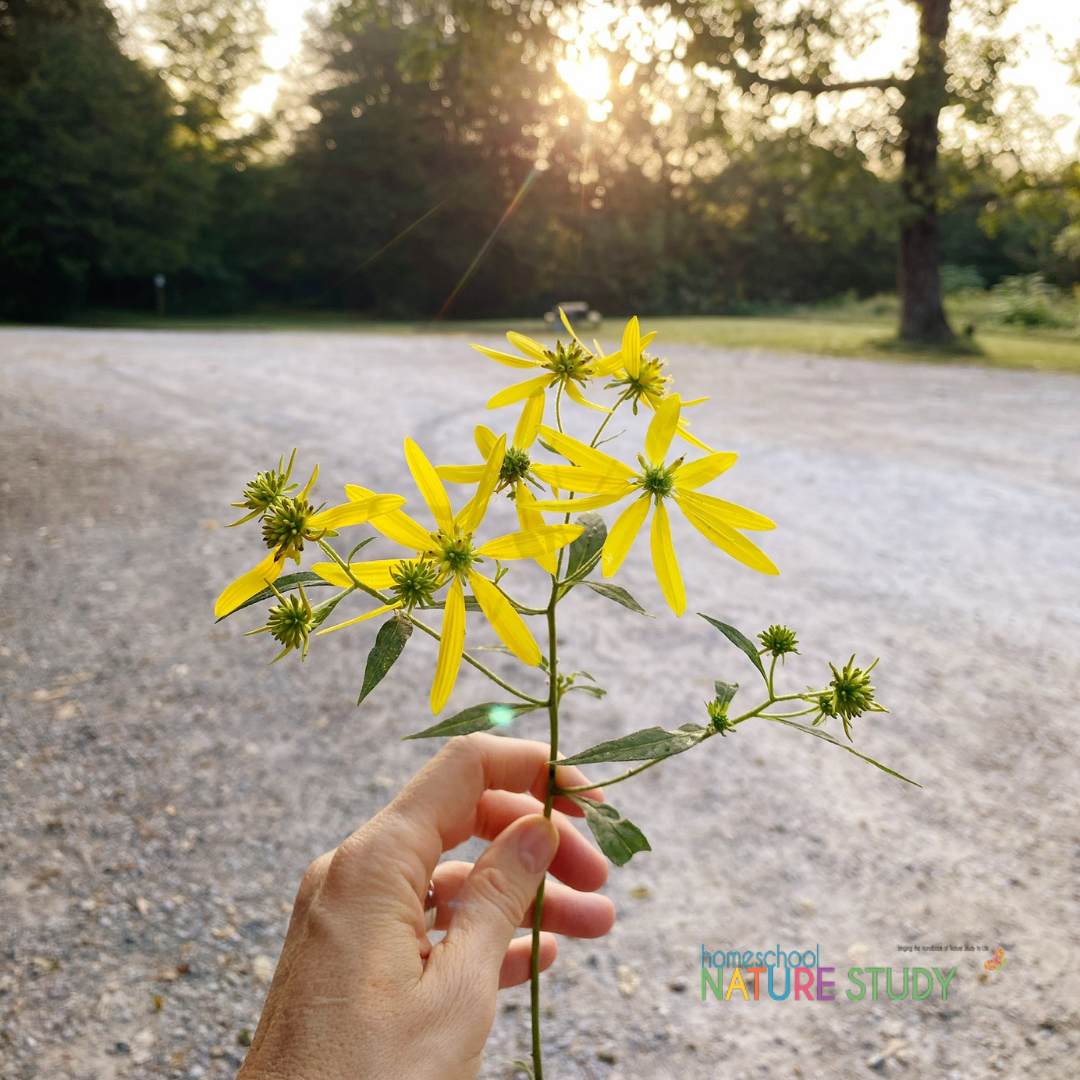
“During autumn the attention of the children should be attracted to the leaves by their gorgeous colors. It is well to use this interest to cultivate their knowledge of the forms of leaves of trees; but the teaching of the tree species to the young child should be done quite incidentally and guardedly. If the teacher says to the child bringing a leaf, “This is a white-oak leaf,” the child will soon quite unconsciously learn that leaf by name. Thus, tree study may be begun in the kindergarten or the primary grades.” Handbook of Nature Study, page 622
How to Teach Homeschool Nature Study
I regularly am asked how to teach nature study. Should you read the Handbook of Nature Study to your child? Should you draw in other resources? Should you take your nature journal with you on your walks? Should you require a nature journal entry? How do you share information without it becoming a “lesson”?
These are all really great questions and I know for each family the answers will be a little bit different because you have different children with different learning styles. I try to keep in mind the principle outlined in the quote from the Handbook of Nature Study above.
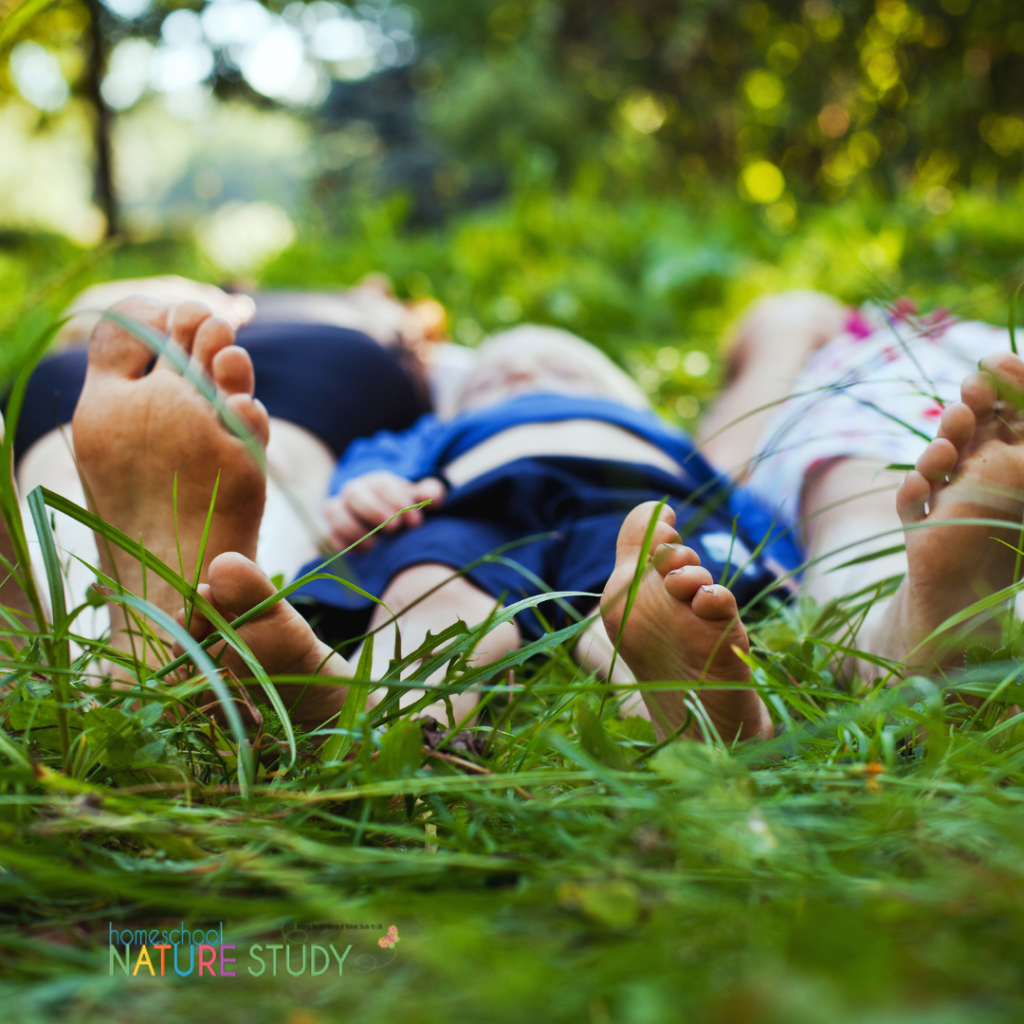
The Handbook of Nature Study Book is Written for Adults
The Handbook of Nature Study was written for adults. Adults who were then to try to offer nature study to children. Anna Botsford Comstock knew that the key to great times in nature study depended on the interest and enthusiasm of the teacher/parent. She knew that even adults *needed* this time outdoors to refresh and to inspire us to teach homeschool nature study.
“She who opens her eyes and her heart nature-ward even once a week finds nature study in the schoolroom a delight and an abiding joy……She finds, first of all, companionship with her children; and second, she finds that without planning or going on a far voyage, she has found health and strength.” -Handbook of Nature Study, page 3
How to Naturally Share Nature Study With Your Child
The other key is to take things slowly and to over time incorporate vocabulary and labels for things you find in nature. This calls for a little work by the adult in the beginning. More on this in Nature Study: Creating Habits Young and Nature Study The Gentle Way.
“If the teacher says, “I have a pink hepatica. Can anyone find me a blue one?” the children, who naturally like grown up words, will soon be calling these flowers hepaticas….The child should never be required to learn the name of anything in the nature study work; but the name should be used so often and so naturally in his prescense that he will learn it without being conscious of the process.” Handbook of Nature Study, page 11
“The half-hour excursion should be preceded by a talk concerning the purposes of the outing and the pupils must know that certain observations are to be made or they will not be permitted to go again. This should not be emphasized as a punishment; but they should be made to understand that a field excursion is only, naturally enough, for those who wish to see and understand outdoor life.” Handbook of Nature Study, page 15
If you want more guidance on how to teach homeschool nature study, read the whole section on page 15 under The Field Excursion. I find that as my children are getting older, our time is more limited as far as nature study. I make it a priority to fit it in every week but the amount of time is more limited. We need our formal nature study to be concentrated and focused so that we can get the most out of it.
“It is a mistake to think that a half day is necessary for a field lesson, since a very efficient field trip may be made during the ten or fifteen minutes at recess, if it is well planned.” Handbook of Nature Study, page 15

The nature journal is something that is as individual as the child. My expectation for the simplest of nature journals has always been to include a sketch, a label, and a date. This simple formula works to help the child not be so overwhelmed with making a “pretty” journal entry. The journal is something that should bring joy to the child.
“When the child is interested in studying any object, he enjoys illustrating his observations with drawings; the happy absorption of children thus engaged is a delight to witness.” Handbook of Nature Study, page 17
How to Teach Homeschool Nature Study with Nature Journaling?
This means that if your child finds drawing a chore, skip it. Try again another day. Eventually, they will find something to include in their journal. Do not get in the mindset that only drawing is acceptable in a nature journal. Lists, photos, diagrams, thoughts, poems, a sentence or two, or a combination of those things will become a very nice journal over time. We do not make a journal entry every week and our journals are still precious to us.
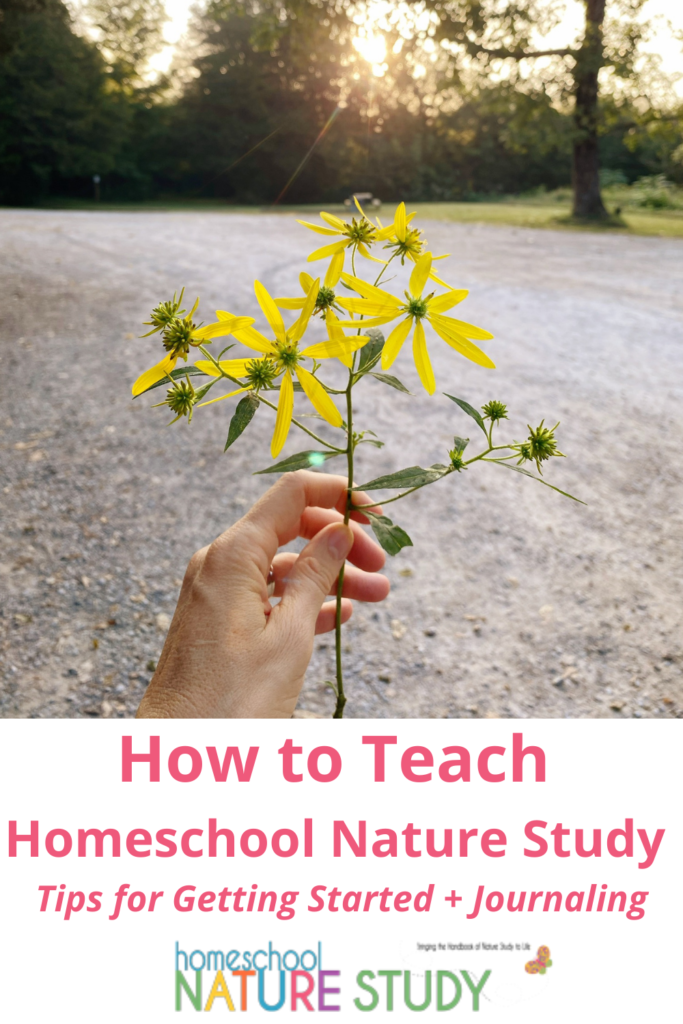
Photo by Amy Law
The Handbook of Nature Study: Benefits of Homeschool Nature Study for All Ages
So hopefully I have helped you understand a little of what I get from the Handbook of Nature Study.
- The Handbook of Nature Study (HNS) is for the adult to read and be inspired from.
- The HNS is for gleaning information and observation ideas for nature study.
- Young children will learn the proper names for things naturally if you use it in conversation.
- Older children will need a bit more preparation to begin to focus their nature study time.
- Nature journal entries are not required after every outdoor experience.
- Nature journals include a variety of information.
- Nature study refreshes and inspires the parents as well as the children.
- Regularly read the Handbook of Nature Study to refine your skills as a guide for your children.
Dust your copy of the Handbook of Nature Study off today and read a few pages of the introductory chapters. Scan the Table of Contents and see if anything catches your eye for a nature study this week. Join us in completing a series of Outdoor Hour Challenges. Do something this week to get you outdoors with your children for even a few minutes to have some fun and refreshment.
How To Get Started With the Outdoor Hour Challenges
Just how do you get started in homeschool nature study? How do families participate in the Outdoor Hour Challenges? It is so simple to get started and we will show you how. Grab this free Homeschool Nature Study Guide and discover the joys of nature study in your homeschool.
Join Our Homeschool Nature Study Membership for Year Round Support
You will find a continuing series for the Outdoor Mom in our Homeschool Nature Study membership. Plus 25+ continuing courses with matching curriculum that will bring the Handbook of Nature Study to life in your homeschool! In addition, there is an interactive monthly calendar with daily nature study prompt – all at your fingertips!
First published September 2009 by Barb. Updated January 2022 by Tricia.

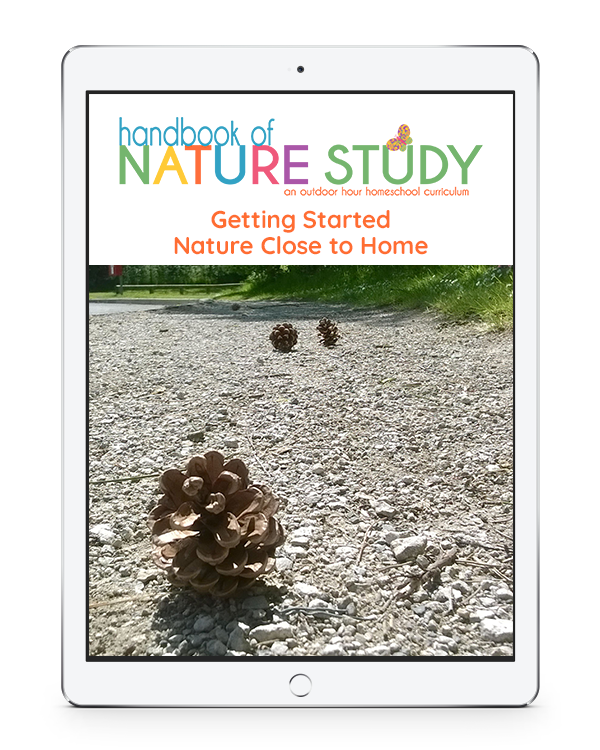
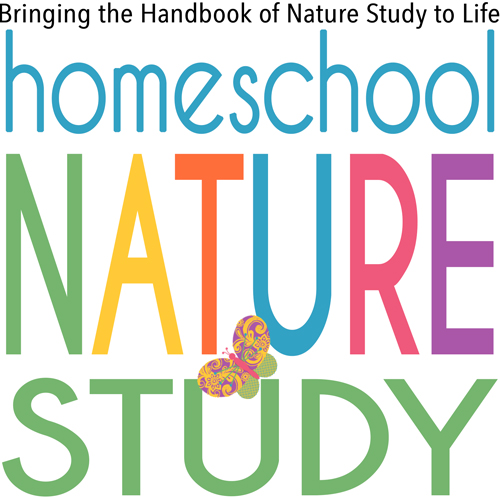
This is a great post. It just reaffirms where we are going with our nature study.(It’s really cool that this coincided with where we were today in following the 1st 10 challenges. 🙂 )
Thanks so for your continued direction. You are such a blessing.
Yes, this is very helpful, and a good reminder of what nature study is and isn’t. And your season-inspired background looks beautiful!
This post was very helpful! I’ve had The Handbook of Nature Study for years and have never really figured out how to implement it! Now I’ll go dust it off and try again. Thank you!
Good info, Barb!
We have a once a week ‘formal’ nature study with Handbook of Nature Study, but we have many days of ‘informal’ Nature study; (no books, no instructions!)
As always, your posts are so helpful. I love our weekly nature outings with a few cm families, but realized from your post that I need to do more to prepare for the “field excursion”, as our nature time can sometimes be the necessary nuisance that interrupts my boys’ adventure time.
Just found your blog. It’s GREAT. I am a huge ABComstock fan. I grew up attending a Girl Scout camp named in her honor.